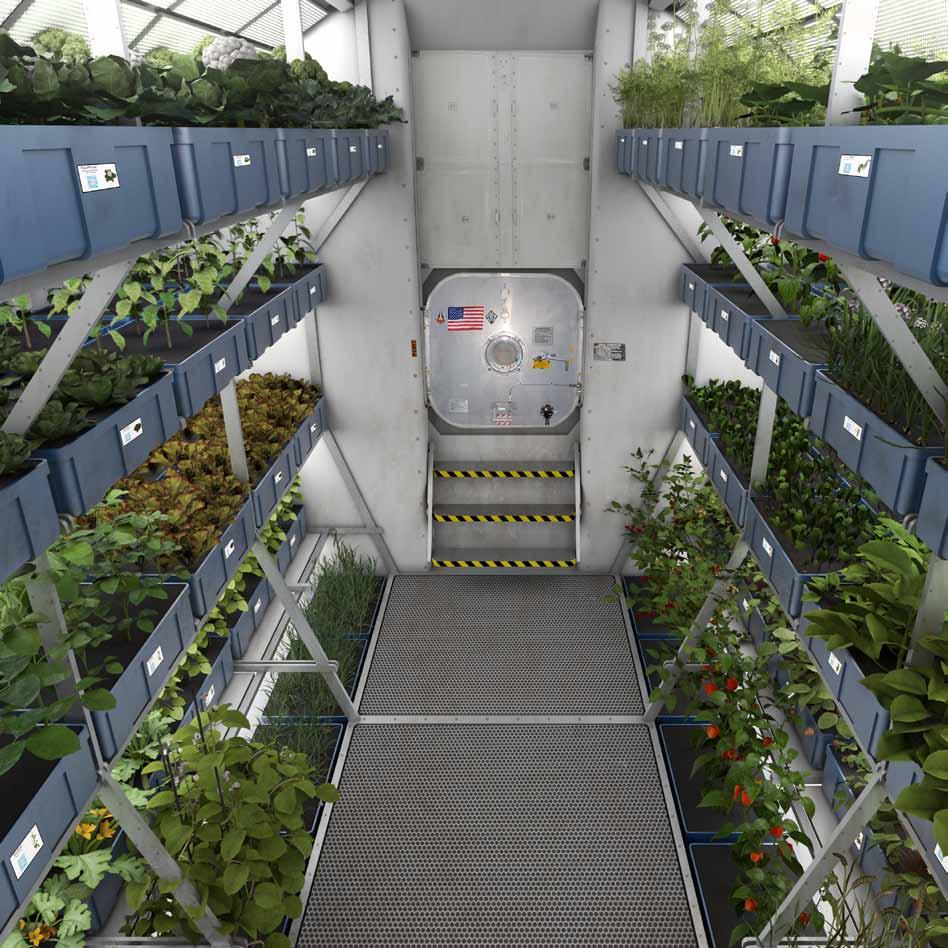
1 minute read
Plants in space
taking into account that plants constitute 50% of our food, there is a high demand for considering possible ways to grow them in space conditions. Since 1960s experiments have been conducted in space stations and also on board a spacecraft using plants of several species such as tomato, potato, lettuce, arabidopsis or even wheat. It is not an easy task to perform such experiments and many challenges need to be addressed if astronauts are to successfully grow enough food.
Such challenges include reduced gravity, elevated radiation levels and artificial light. Although there are several examples of successful stories such as lettuce grown in International Space Station, there is a need to develop advanced space agriculture technologies. additionally, taking into account the limited amount of space available on board a rocket or ISS, scientists aimed to grow dwarf varieties of wheat or cherry tomato. Recently, in 2017 scientists from Peru together with Frito-Lay Co. used a simulator that mimics the harsh conditions on Mars (e.g. frosty below-zero temperatures, high carbon monoxide concentrations, and a system of lights imitating the Martian day and night) to successfully grow a potato plant. It raises hope for human life on the red Planet.
understanding the genetic basis of plant development and the mechanism of response to extreme conditions will allow for better adjustment of plant material to space conditions. at the university of Silesia, Department of Genetics, we are working on semi-dwarf genotypes of barley that successfully deal with water deficit in the soil. One can imagine a scenario where a multi-layered network of stress response in plants can be controlled in order to obtain plants better adjusted to extreme space conditions.
Agata Daszkowska-Golec, PhD Geneticist and molecular biologist Department of Genetics, Faculty of Biology and Environmental Protection, University of Silesia in Katowice










